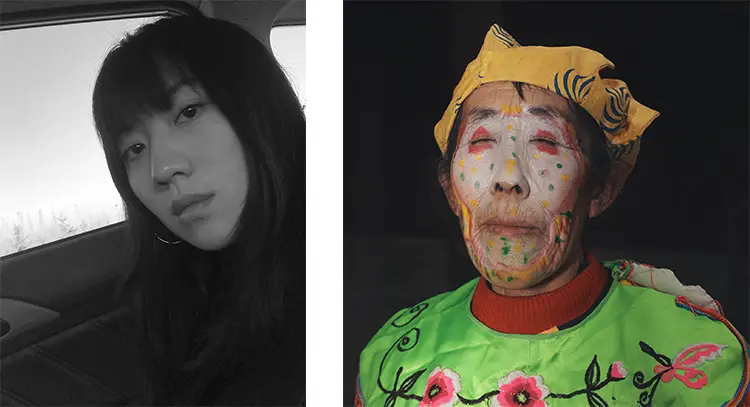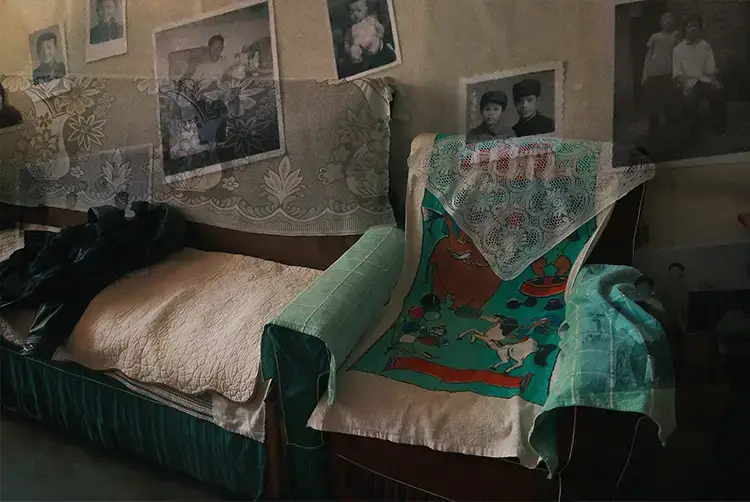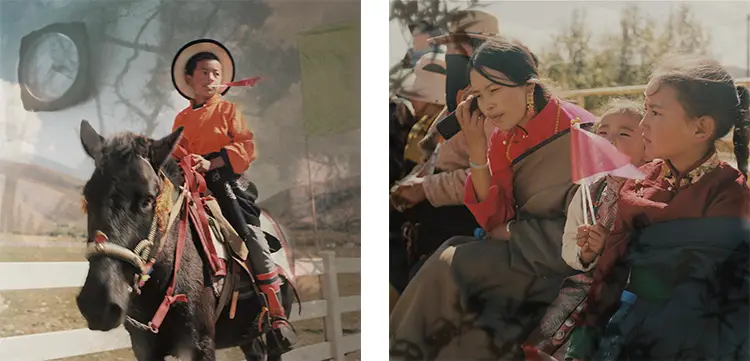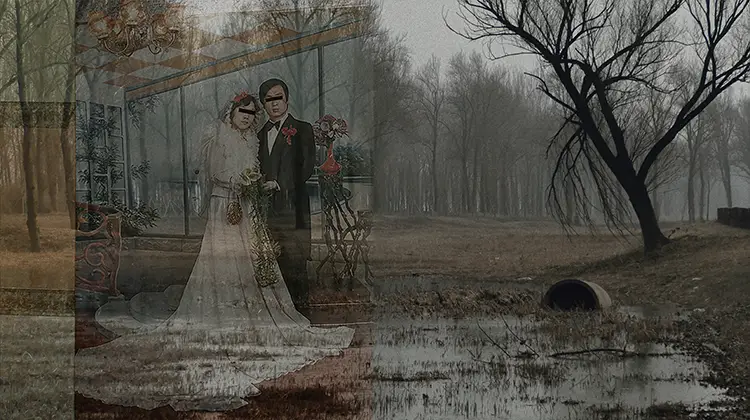“Those three years were a period of quiet, yet intense, accumulation of creative tension and dissent.”
The Distance Within: A Childhood of Disconnection and the Birth of Artistic Perception
Growing up between layered histories and cultural dissonance, Anqi Chen developed an acute awareness of social and emotional displacement that would later permeate her artistic voice. Born in China and currently residing in Beijing, Chen spent her formative years in Changzhi, Shanxi Province—a place shaped by a particular historical memory. Her neighborhood, populated largely by families from Tianjin who had relocated under complex historical circumstances, created a liminal space where identities blurred and belonging became elusive. Within this complex environment, Chen found herself alienated from her peers and uncertain of her own place in the social fabric. These early experiences, colored by inherited trauma and isolation, subtly informed the undercurrents of her creative outlook.
Chen’s artistic journey began in kindergarten with painting lessons, but a critical turning point came in middle school when she transitioned to the High School Affiliated to the Central Academy of Fine Arts in Beijing. Departing from China’s conventional education system, she received instruction that mirrored a university-style approach, emphasizing independent thinking and conceptual freedom. The experience was formative, offering her a framework that nurtured exploration rather than obedience. This unique educational path amplified her nontraditional perspectives, and she began developing a visual language that avoids overt confrontation in favor of quiet resistance—a style she describes as an “undercurrent” of critique, shaped by the Confucian-influenced environment in which she was raised.
What emerged from this upbringing was not merely a desire to make art, but a need to speak through visual subtlety. Chen’s early detachment from dominant narratives led her to question the surface of accepted truths and to search for meanings hidden beneath. Her work does not shout; it hums with tension and restraint, exploring psychological territories that are difficult to define. This nuanced way of seeing, born from personal ambiguity, has since become a distinguishing aspect of her artistic identity.

Anqi Chen: Confronting Silence with the Camera’s Eye
The turning point in Anqi Chen’s commitment to a creative life came not in a studio but in the midst of personal and societal upheaval. Though immersed in artistic culture from a young age—her grandfather was a violinist, and the arts were ever-present in her home—it wasn’t until the COVID-19 pandemic that she began to reframe art from a passive pursuit into a lifeline. During this turbulent period, an intensifying and unresolved emotional conflict with her mother reached a breaking point. Chen describes this tension as stemming from a common pattern in Chinese families: the emotional dependence between single mothers and their children, who are often asked—implicitly or otherwise—to serve as emotional stand-ins for absent partners. Art became her only refuge and means of disentangling herself from this psychological burden.
Strict lockdown measures during the pandemic led to restrictions in movement and prompted deeper reflection on inner space and self-expression. In this uncertain atmosphere, her internal creative urgency grew stronger. Though the external world had slowed to a standstill, her inner life intensified, accumulating layers of frustration, memory, and untold stories. The result was a surge in creative output and a deepening commitment to using visual language to question, record, and survive.
This creative resurgence led her to photography—a medium that seemed to crystallize her ideas in ways other forms could not. Bruce Gilden’s “Yakuza” series was particularly influential in this regard. Encountering the work sparked something visceral in her; despite having no technical experience, she began experimenting obsessively with her phone camera. The emotional impact of two-dimensional images had revealed a new path, one she would pursue relentlessly. Within a few months, she had developed a command over the camera, transforming instinct into skill. For Chen, photography became not only a chosen medium but also a means of reclaiming voice and presence in a world that too often demanded silence.

Fractures, Dust, and Quiet Power: The Language of Vanishing
Anqi Chen’s work resists easy categorization, reflecting her belief that artistic themes and styles should remain fluid rather than fixed. She gravitates toward subjects that often evade notice: overlooked moments, fragmented memories, and the subtle forces that shape human experience. Her current focus lies in what she calls the “hidden truths in the corners” and the “dissipated pasts”—concepts that underscore the transience of reality and the enduring human effort to seek meaning within it. Her pieces do not aim to solve mysteries; instead, they evoke the feeling of searching through dust-covered archives for something that once breathed, flickered, or wept.
Stylistically, her visual tone leans toward muted colors, subdued lighting, and a quiet intensity. Her images suggest more than they declare, mirroring a Chinese idiom she often references: “The silence here is more powerful than sound.” By avoiding overt symbolism or loud aesthetics, Chen compels viewers to look closer, to question what they might be missing. This approach speaks to her deep respect for ambiguity—not as a lack of clarity, but as an honest reflection of life’s layered complexities. Her preference for dim textures and understated visuals is not about aesthetic minimalism; it’s about making space for emotional depth and internal echoes.
In both concept and form, Chen’s art moves against the current of spectacle-driven visual culture. Rather than pursuing dramatic expression or visual spectacle, she focuses on memory’s quiet residue—how it stains, fades, and resurfaces. These explorations are not nostalgic; they are acts of remembering in the face of erasure. Whether capturing the gaze of a stranger on a street or the disarray of a forgotten room, her photographs reflect a conscious effort to preserve what society discards. Each image is a fragment, and together they ask whether these pieces can amount to something whole—or whether their disjointedness is precisely the point.

Anqi Chen: Expanding Mediums, Expanding Meaning
For Anqi Chen, the decision to embrace photography marked a profound shift not only in medium but in mindset. Trained intensively in traditional painting since childhood, she spent years mastering academic technique. However, the discipline that once gave her a sense of purpose began to feel constrictive. Painting became routine, drained of its original joy. Admitting her fatigue was difficult; her identity had long been entwined with the idea of being a painter. But once she gave herself permission to explore outside that role, a new wave of curiosity emerged. Writing became her first outlet—she discovered an unexpected ease in generating long stories from minimal prompts, which led to a broader openness to creative experimentation.
Photography was the first discipline to resonate as a comprehensive language for her emotions and ideas, but it did not limit her creative direction. She began composing music, learning piano, experimenting with synthesizers, and is currently finalizing an independent documentary. Initially, this multidirectional approach triggered anxiety—she feared she was straying too far from a singular focus. Over time, however, she developed a new philosophy: that all art forms are connected, and exploring each one only enhances her primary practice. This realization shifted her standard of artistic success. It was no longer about technical mastery in a single field, but about cultivating a deeper, broader understanding of expression.
One dream project encapsulates this expansive vision: a long-term photographic journey through China’s lesser-known counties, documenting the lives of individuals often ignored by mainstream narratives. Her goal is not to romanticize or otherize marginalized groups, but to immerse herself in ordinary, intimate realities—those of cashiers, elderly plant-lovers, or night-shift workers. She wants to trace the emotions, contradictions, and joys found in these lives, capturing their beauty not in drama but in truth. Though she acknowledges the challenges of undertaking such a project—logistical, financial, and political—her commitment remains unwavering. For Chen, these quiet stories are not supplemental to art; they are its very core.






